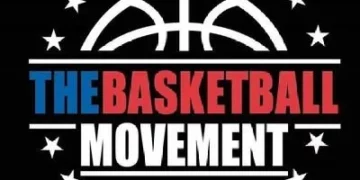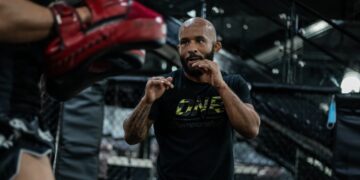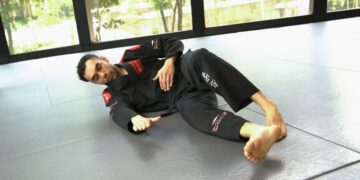Trying something new without knowing what to expect can feel intimidating. Whether it’s a new job, a change in routine, or something completely different like learning a martial art. Out of all the styles available, you’ve decided to give Brazilian Jiu Jitsu (BJJ) a shot. Maybe you’ve signed up for a trial at a martial arts gym in Singapore, possibly one located right in the heartlands. You walk in, and everyone seems to know what they’re doing. There’s bowing, belt colors, and unfamiliar terms. But here’s the good news, no one expects you to know any of it yet. That first class is simply about showing up and starting where you are.
So if you’re thinking about giving BJJ a shot or have already signed up and just feeling a bit nervous, this one’s for you.
You Don’t Need To Be Fit To Start

Martial arts like Brazilian Jiu-Jitsu help improve overall fitness and mobility through the techniques practiced in class.
Let’s clear this up early. You don’t need to be in top shape to train BJJ. In fact, BJJ helps get YOU in shape. You’ll sweat, move, and stretch in ways you might not have in years, but nobody’s expecting you to roll like a pro on day one.
Most beginners worry they’ll gas out or look out of place. Don’t overthink it. Everyone starts awkward. Everyone gets tired. It’s part of the learning curve. Remember, it’s a journey and it’s going to take time.
The Warm-Up Isn’t Just To Warm Up
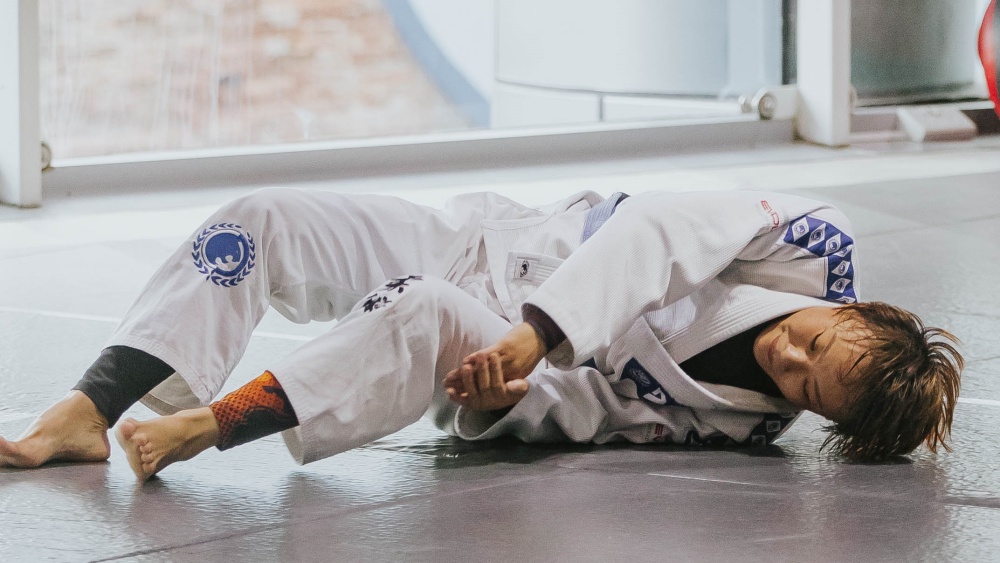
Warm-ups are essential before any training session, preparing your body and mind for the challenges ahead and minimizing the risk of strains or setbacks
Classes usually start with a short warm-up, some light jogging, shrimping, forward and backward rolls, maybe some hip escapes. If those words don’t mean anything to you yet, don’t worry. They will.
This part of class isn’t just about getting your heart rate up. It’s about training your body to move in ways that actually matter in a grappling scenario. The more you do it, the more natural it feels.
You’ll Learn One Or Two Key Techniques
The bulk of the class will usually focus on one or two fundamental movements or positions. That might mean learning how to maintain positions like the mount, escape side control, or applying submissions like the armbar.
The instructor will break things down step-by-step, and you’ll drill the movement with a partner, slowly, at first. You’re not expected to memorize everything. The goal is to just get a feel for the position and the movement. Precision comes later.
Rolling Isn’t Something To Fear
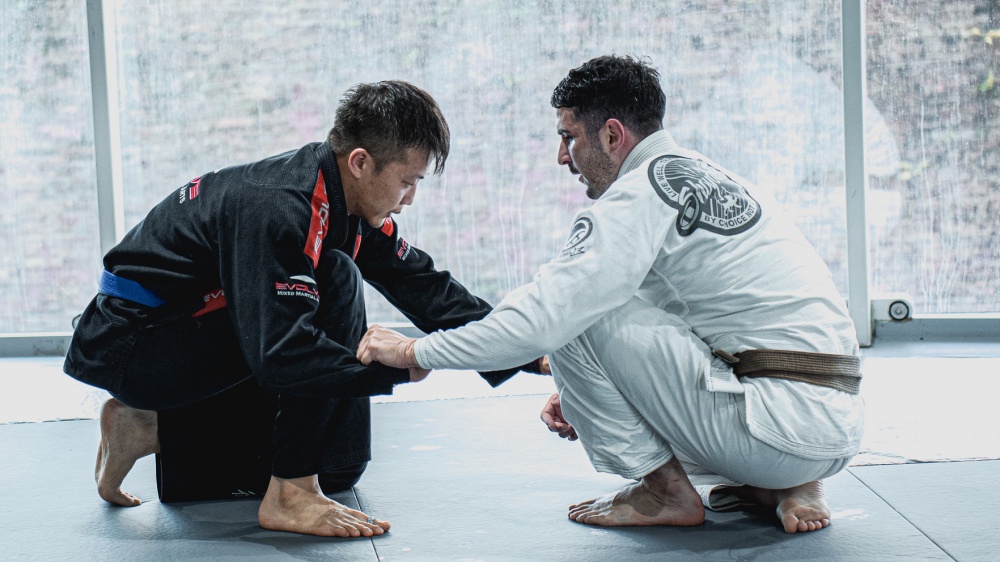
Flow rolling sharpens your focus and relaxes your mind by allowing you to concentrate on executing the correct technique while enjoying the training experience!
One of the biggest questions beginners have is: “Will I have to spar?” The answer? Not in the way you’re probably imagining.
A good school won’t throw you into chaotic, full-speed sparring on day one. Instead, what you’ll likely experience is situational training. Through controlled drills where you start from a specific position and work through it with a partner at a manageable pace.
This kind of training is way more beginner-friendly. It lets you focus on applying what you just learned, without being overwhelmed or pressured. You’ll get to feel what real resistance is like, but in a structured and safer setting.
So don’t stress about “rolling.” You’re not expected to fight your way through class. And when the time does come to spar fully, you’ll already have the tools and the confidence to do it.
Tapping Out Doesn’t Mean You’ve Lost
This part surprises a lot of people. In BJJ, tapping is how you signal “I give up” during a roll. But here’s the twist, it’s not a failure. It’s part of the process.
You’re going to tap a lot in the beginning. That’s how you learn. That’s how you stay safe. And eventually, you’ll start catching people in submissions too. It’s just a matter of time and practice.
What To Wear And Bring
If you’re training Gi BJJ, your gym will likely provide a uniform for your first class. It’s basically a heavy cotton jacket and pants that you’ll tug and pull on during techniques.
If it’s a no-gi class, just wear a fitted t-shirt or rash guard and shorts (without pockets). Bring a bottle of water and a towel. Footwear for both scenarios are unnecessary and you’ll have to be barefoot on the mats.
People Are More Supportive Than You Think
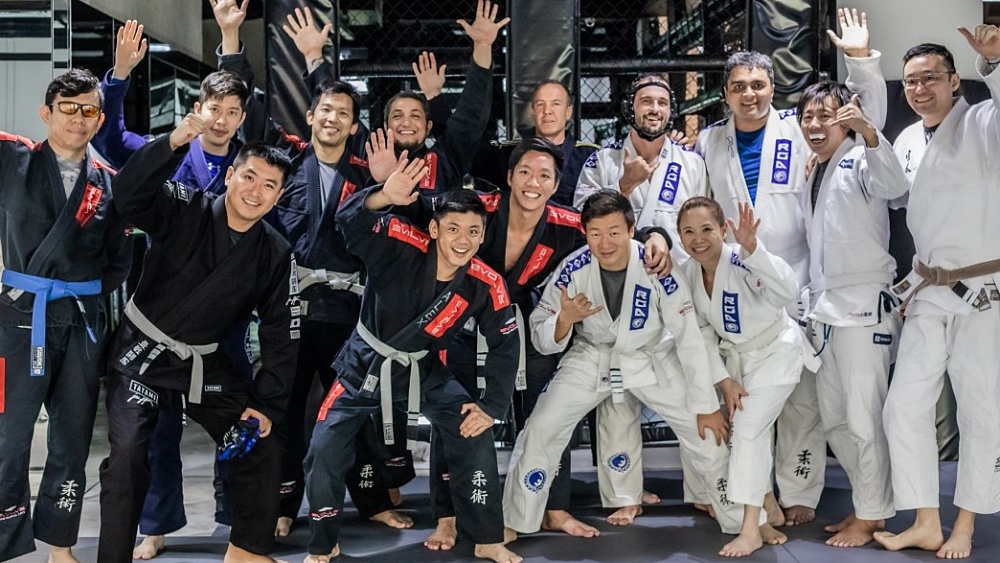
The community and camaraderie forged during a BJJ class is always welcoming and supportive, creating an environment where everyone grows together.
Although BJJ has a reputation for being tough, and it is, but the community is often surprisingly welcoming. You’ll find people helping each other out with grips, remembering steps, and even calming down new nerves.
Everyone was a beginner once. And most people remember exactly what it felt like. So don’t be afraid to ask questions or make mistakes. You’re not alone. Even black belts remember what it felt like, and they’re always willing to help.
Final Thoughts
Your first BJJ class probably won’t go perfectly. You might forget a few steps, feel a bit lost, or leave with sore muscles you didn’t know existed. That’s normal.
But you’ll also leave with something more important, a sense that you started something real. Something that builds discipline, sharpens your mind, and makes your body stronger over time.
You may also like:
Why Rolling With Higher Belts Is The Fastest Way To Improve Your BJJ
5 Underrated BJJ Submissions That Actually Finish Fights
When Craig Jones announced the first-ever CJI early last year, most of the Brazilian Jiu-Jitsu and Submission Grappling world thought, “No way he pulls this off.” Then he did. $1 million to the winner, every…
There was no spotlight speech. No drawn-out farewell. Just a man who had given everything to his craft, stepping off the mat for the last time and leaving his black belt behind in Brazilian Jiu-Jitsu….
Ask most practitioners at any Brazilian Jiu-Jitsu gym, and you’ll hear the usual: triangle, armbar, rear naked choke. Proven over time, because effectiveness never goes out of style. But here’s the thing: most experienced grapplers…
Grappling in the United States has grown from something niche into one of the strongest and most creative scenes in the world. What started with the early spread of Brazilian Jiu-Jitsu and a strong wrestling…
BJJ is known for its constantly evolving submission game, and among the many ways to finish a match, the “bar” submissions stand out as some of the most fundamental and effective. These submissions, which typically…
Along with its rich cultural heritage, Brazil is one of the most respected countries in grappling and is widely regarded as a powerhouse. Creating its own identity, Brazil’s distinctive approach to fighting has shaped what…
When people think of MMA, they usually picture the highlight moments, explosive knockouts, slick submissions, and last-minute comebacks. What they don’t see is the hard work and engine underneath all of it: conditioning. Conditioning is…
Not many Muay Thai fighters compete at the highest level well into their late 30s. Even fewer manage to stay on the edge. Nong-O Hama is one of the rare exceptions. Since making his debut…
Trying to get back into shape after a lengthy break often feels like you’re trying to climb Mount Everest in flip-flops. Little things, like trying to tie your shoelaces, can make you out of breath,…
Many people find it difficult to kickstart a healthier lifestyle, especially with the demands of school, work, or family. In today’s fast-paced world, some even view healthy living as a luxury. But, what if we…
The bell rang, and you could tell something was off. Not in a bad way — just different. Instead of the usual slow-paced chess match that defined traditional Muay Thai, the fighter in red trunks…
When ONE Championship relaunched fights at Lumpinee Stadium under the Friday Night Fights banner, it wasn’t just reviving a legendary venue, it was redefining what it meant to “make it” in Muay Thai. No longer…




